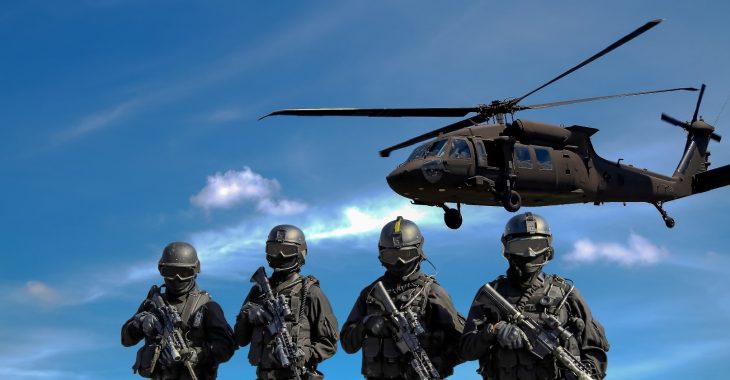In the first post in this series we discussed how some attendees can get a sour feeling from a meetup. This can happen if they are ignored upon entrance, can’t find the place, don’t talk to anyone, get bored, etc.
To make sure we weren’t leaving attendees with such a sour feeling, I created a “meetup commando” – a dedicated group of roughly 5 people who helped turn every event into a success story. The commando comprised of coworkers, employees, interns, and volunteers.
Together we:
- Ran brainstorming sessions to prepare for events and come up with strategies to make people feel awesome
- Split operational tasks to create a seamless workflow during the event
- Prepared marketing plans for events, and shared forces in executing them
- Attended other meetups (together or separately) to get ideas
To start your own meetup commando, choose employees/coworkers who are likely to enjoy taking part in running events. They don’t have to be super outgoing, but they have to enjoy talking to new people. If you already have a community, let it be known that you are looking for volunteers to help run events; if you can’t find others to join in, start a one man/woman commando and implement the tips below on your own. Soon you will start growing your community and engage others.
Let’s look at a few of the things you can do with your Meetup commando.
Before the event
- Meet with your commando and brief them on the upcoming event. Main goal: we want attendees to feel great.
- Prepare:
- Printed lists of attendees
- Branded shirts for all commando members, so people can easily spot the organizers
- Stickers (and markers) for nametags (if appropriate)
- Brochures with information about your organization, to place at the entrance and in other strategic areas such as: on the snack table, on seats, in the bathroom…
- An artistic blackboard or another cool element to take a picture with
- Go over the list of attendees. If it’s a small event, search online for info about each attendee, so later you can chat / engage with them based on what you read.
- Remind the speaker to engage the crowd with interesting questions that will prompt sharing an experience / opinion. During or after the event, you can share selected quotes on your social media
- Find a way to collect emails – offer a valuable giveaway / draw a prize / offer to send the slides from the presentation
Create an attendee greeting process

Create a flow you take attendees through, from the moment they arrive at the venue. For example: welcome them >> get their name checked >> give a short pitch >> have their image taken by the blackboard >> ask for their email >> introduce them to another attendee >> help them find a seat
Once you have such a flow outlined, proceed to describing it in more detail, so you can delegate roles to the different commando members. Here is a detailed greeting flow based on the example above:
- An attendee arrives at the door. He or she is met by a smiling commando member, who checks their name on the list.
- Small talk and pitch. Try to include the points below, not necessarily in this order, keeping the natural flow of conversation ( = don’t force it!)
- So.. X, what brings you to this meetup today?
- What do you do?
- Oh great, I’m sure this meetup will be of great value for you! Do you want to give me your email so I can send you the slides later?
- Have you been here before? Do you know what we do?
- Want to take a pic next to our awesome (… painted wall)?
- Are you on Twitter? ( If yes, follow them, and tweet to them “great meeting you today at…”)
- Make them feel important by saying things like: yeah, I think I saw your bio in the attendee list and it stood out (but don’t lie, maybe they’re not on the attendee list… 🙂 )
- Prompt them to take a picture for social media sharing. For example – as you start leading them towards the main space, “by the way, do want to tell us what inspires you and take a picture?” Then lead them to the blackboard where people add a note about something that inspires them and take a picture.
- “Let me help you find a seat.”
- Here, you walk them to the seating area. Ideally, there are people in the seating area whom you’ve already spoken to, and you know what they do/what their interests are. Introduce them! “Stephanie, meet Mark. He works in the insurance industry and his company is looking for developers, perhaps you know someone.” Such an introduction immediately sparks a conversation between the two people and you are free to go back to the entrance to greet the next attendee.
- If you did a good job, when you are done matching people you will have a lot of mini groups chatting in the seating area. You can join a new attendee to a group: “hey guys, I’d like you to meet Y, she is a marketing consultant that specializes in high tech companies…”
- Since most people are afraid of reaching out to others, you’ll see that during the break people will often keep talking to the same people you introduced them to. Look for those who appear to be lonely. Maybe they got in late, or perhaps they simply didn’t click with the person you introduced them to. Try to tactfully hook them up to each other or join them to a new group (unless you get the vibe that they want to be left alone).
Notes:
- In the flow described above, each attendee goes through the process with one commando member, from beginning to end. When the commando member is done seating an attendee, he or she goes back to the entrance to start the process with someone new
- You can also experiment with an assembly line approach: each commando member is in charge of one segment of the process. for example, the first person greets everybody and takes their emails. The second person takes their picture, and third is in charge of the seating area. Try both approaches to see which one works better for your team.
- The process described is just an outline, make sure commando members bring their own “self” so the process feels natural and not too planned (even though planned is still better than nothing)
- Understand that even if you do your best, you can’t control all aspects of the event. You might miss some of the attendees, who will get in undetected. You might annoy some attendees who will feel that the seating process is intrusive. You can’t make everybody happy.
During the talk
- One commando member is in charge of taking notes and writing a short blog post about the event. If the speaker is presenting, you can take pictures of the presentation and add to the post.
- One commando member goes over the attendee lists gathered from all commando members and merges them into one spreadsheet.
- She can then check to see which ones we don’t have an email for, and approach them after the lecture to see if they want the slides / pictures/ etc.
- If we have Twitter handles for attendees- use them in a tweet, real time.
- One commando member remains in the entrance area, to welcome people who are late.
- One commando member keeps an eye on logistics – to see if extra chairs are needed, more snacks, etc.
Follow-up after event
- Upload the blog post. Consider using your blog to promote and link to guest websites – add a little story about guests if relevant
- Upload event images to social media
- Create tweets to engage with attendees, perhaps mentioning something controversial you discussed
To sum up
In the last three posts we discussed how to run a great meetup. We spoke about defining meetup goals, finding a topic for the meetup, booking a speaker, charging for your meetup, and creating a great attendee experience with the help of your meetup commando. I hope you will be able to keep these points in mind when planning and running your next meetup. Feel free to reach out with questions in the comment section below. Take care!

